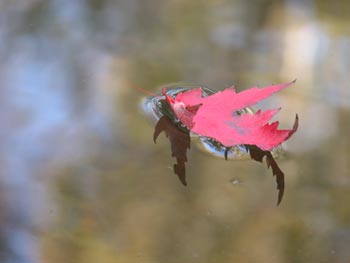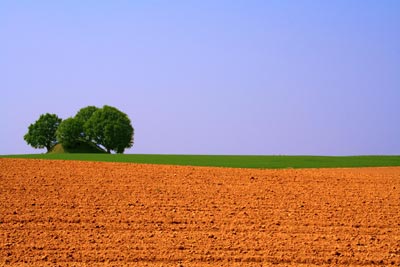 Value of Living Trees
Value of Living Trees

photo by CaptPiper
Human Survival
“Trees are vital for the survival of all life forms on Earth. If the last extensive woodlands, whether tropical or temperate, are destroyed, Earth will become uninhabitable. Trees and humans stand and fall together.”
— Fred Hageneder, The Spirit of Trees
Without trees, there would be no life on Earth – at least, not one habitable by humans. It is as simple as that. NO TREES, NO HUMANS.
Climate
One of the many reasons for this simple life-and-death equation is the highly significant roles that trees play in the eco-system of the Earth as a whole as well as in the countless subsidiary ecosystems on which its teeming multitudes of creatures depend. Not least are the contributions of trees in the creation and regulation of the Earth’s atmosphere.
see more: ![]() Trees & Climate
Trees & Climate
and: ![]() The Contributions of a Single Tree
The Contributions of a Single Tree
Trees as Atmospheric De-Polluters

The bark of the London Plane tree absorbs dust and pollutants.
photo by Simon Blackley
Trees play a significant role as atmospheric de-polluters, filtering out dust particles, smoke and fumes. In addition to extracting carbon dioxide, forests act as excellent biological filters. They possess the property of attracting like a magnet the tiny solid particles which are suspended in the air, products of industrial waste. Due to this property, a hectare of fir-tree forest, for example, ensures the settlement of around 30 tons of dust a year. A hectare of Oak extracts even more: 54 tons. According to estimates of Russian experts, every acre of woodlands purifies up to 18 million cubic metres of air on average. It is cleaned not only of dust particles but also of various toxic fumes and pathogenic microbes. However, an increasingly heavy price is paid for this. The vitality and capacity of trees is not unlimited. The growing contamination of air has a deleterious effect on the vital functions of the forests. It reduces their productivity and leads to their death. They do not simply filter out hazardous substances but absorb them as well. About 50% of this hazardous waste penetrates their living tissues, gnawing away at them like a
tumour.

photo by jucanils
Trees, Soil, & Agricultural Yields
There are many wise farmers. Unfortunately, there are also ignorant ones. There are farmers who are conscientious caretakers of the Earth; and also those who, unconcerned with the consequences of their actions upon it or its creatures, are simply profiteers. There are those who, largely disconnected from Nature and almost wholly ignorant of her laws and ways, make decisions about land, woods, rivers and soil, in concrete offices in far-off cities. They are responsible primarily to their stockholders. The destruction they cause is on a vast scale. And they are not held accountable. Commercial agriculture is concerned with the most profitable use of land, with profit defined in terms of short-term gains, often without any consideration of long-term and/or permanent losses in terms of the very capital on which it thrives.
Ignorant farmers cut down trees and hedges. Here are some of the benefits of trees: While ever serving life as a whole, their benefits to farmers are quite specific:
 Wind Factor:
Wind Factor:
Winds reduce crop-yields considerably, lowering temperatures and dehydrating soils. So, what trees do is reduce the speed of wind, providing shelter for other life-forms and lesser species of vegetation, as well as animals, or livestock. This is done intentionally by the creation of shelterbelts. Shelterbelts can influence the evaporation rate over cultivated land by as much as 30 metres upwind and 120 metres downwind. Properly planted, fifty per cent porous, trees can reduce wind speed by half. In countries dominated by almost continuous wind, or where gales are frequent, shelter belts are highly beneficial, if not vital. In Canada, research has shown that farms with ⅓rd tree cover are more productive than farms of equivalent area where there are no trees at all. By their sheltering, trees create microclimates that help the soil, while providing additional humus and protection against erosion. Animals in fields exposed to persistent, strong or cold winds, also do not thrive; and must be kept indoors for longer periods.

photo by prezz
 Soil Loss:
Soil Loss:
Billions of tons of fertile topsoil run away into dykes, streams and rivers, before being carried down into the sea each year, never to be returned – unless, in the future (as in the past) by some cataclysmic Earth upheavals. Trees stabilize soil and prevent erosion, particularly on slopes. Stabilizing soils on cultivated plains, they prevent dust bowls, long before they turn into deserts.
 Soil Fertility:
Soil Fertility:
The ignorant farmer believes that fertility of soil is created by chemicals; in fact, dousing it with chemicals is the faster way of reducing its fertility. Fertility is created by microorganisms, many of which are killed by chemical administrations. Microorganisms need feeding. Drugs are not the answer. Trees are natural nutrient providers. They draw up nutrients, including essential minerals and trace elements, from deep levels. Their falling leaves, scattered by wind, feed millions of soil organisms. Along with humus, trees are natural, safe, chemical providers.
 The Optimum Use of Land for Cultivation:
The Optimum Use of Land for Cultivation:
The optimum use of land for cultivation (depending on specifics of location) is a multi-tiered system of crop-bearing trees, shrubs and plants, of varying heights – which (again depending on the specifics of location) may be mixed with livestock. It might well be beneficial for many a farmer to shift from an unhealthy dependence on monoculture cropping into a tree-integrated systems of multi-cropping. See ![]() Forest Farming & Gardening.
Forest Farming & Gardening.
Tree Crops: Fruits & Medicines
Those who enjoy their edible fruits, know the value of living trees. From succulent to nutty fruits, trees offer an immense variety. What is less known is the vast number of medicinal substances that are provided by trees; which can be harvested sustainably. What a tragedy for humankind that it is now destroying billions of acres of forest, with their entire contents of trees, plants and wild life, bearing gifts for life which it has not yet discovered. It is time to bring a halt to this monstrous absurdity. Time for drastic actions.

photo by CaptPiper
Wild Life
Wild life depends hugely on trees, whether in the tropics, the wilds of rainforests, or the cultivated landscapes of more temperate climates. They provide shelter, homes and food for myriads of creatures, each with some essential role to play in the intricate and fragile web of life. Cut them down and, while many lose their habitats, many also become extinct. Accelerating species-extinction is now a fact: One species every ten minutes. Humankind is now presiding over the sixth greatest extinction of species that has ever taken place on this planet, the last resulting in the extinction of the dinosaurs. The willful destruction by man of forests, woodlands, and natural habitats is a major cause.
Many believe that it’s all happening in rainforests thousands of miles away; that others are responsible. We do not realize that the primary responsibility is ours, wherever we are; that it is our insatiable demand for raw materials that is creating the markets. We do not realize what destruction is happening in our own localities. It is not always blatant; often it is devilishly subtle and surreptitious.
How much wild life depends upon the existence of trees! Have you any idea what a universe of life revolves around a single one?
Take a Single Oak Tree, for Example
- 284 different insect species may be found feeding on a single Oak: Among them are weevils, beetles, ladybirds, wasps, bugs, spiders, snails, woodlice, butterflies and moths.
- Consider one of these species, moths: The larvae (that is, the caterpillars) of more than 200 species of moth feed on the Oak.
- Lichen: A single tree may have more than 30 different species of lichen growing on its bark. Altogether, over 300 different lichens have been found on Oaks.
- Acorns: In a good year, a single Oak may produce up to 90,000 acorns. In summer, 40 acres of Oakwood can support between 300 and 400 birds of more than 30 species. They are also relished by squirrels and mice.
- Fungi: A rich crop of fungi, mushrooms and toadstools, grow on Oaks.
- Ferns and mosses, you will also find these. About 65 different mosses and liverworts have been found growing on the bark of Oaks.
- Birds: Oaks (as other trees) are nesting, sheltering, and foraging grounds for birds. Each has its specialty, with unique skills and preferences. While tits and warblers feed on sap-sucking, leaf-eating creatures such as caterpillars and bugs, tree-creepers winkle out insects in cracks and crevices in the bark. Others, like robins and blackbirds, scuttle around in search of grub at the foot of a tree.
- Then there are the mammals that shelter in our woods. When we cut down an Oak we may think we’re merely harvesting timber. In truth what we are doing is destroying a universe. No, more than this, if we only knew: At the rate that we are doing it, we are destroying whole eco-systems: indeed, the very life that supports us.

photo by Harper Stone

Hundertwasser Building in Darmstadt, Germany. Trees grow on the roof, in the courtyard and out of some of the windows. Photo by Sascha Noyes
Trees & Cities
In cities, living trees make a variety of contributions: reducing pollution, absorbing carbon dioxide, releasing oxygen, generally improving air quality, humidifying the atmosphere, bringing healing as well as wealth and beauty – at the same time as providing havens for birds, butterflies and other wild life.
![]() Their leaves perform a vital function in filtering out air pollution, in absorbing fumes and trapping lead and dust particles. A mature Beech, for example, can extract several kilograms of dust particles from the air, which is later washed off by rain. Two and a half acres of Beechwood can extract about 4 tons of dust from the atmosphere per year. Even a single row of trees on each side of a street can reduce the amount of dust in the air by 25 per cent. A tree like the London Plane absorbs dust in its flaky bark, then sheds it in early autumn. Many trees do well in cities.
Their leaves perform a vital function in filtering out air pollution, in absorbing fumes and trapping lead and dust particles. A mature Beech, for example, can extract several kilograms of dust particles from the air, which is later washed off by rain. Two and a half acres of Beechwood can extract about 4 tons of dust from the atmosphere per year. Even a single row of trees on each side of a street can reduce the amount of dust in the air by 25 per cent. A tree like the London Plane absorbs dust in its flaky bark, then sheds it in early autumn. Many trees do well in cities.
![]() Trees not only filter out dust but noise. In congested cities, this is much appreciated.
Trees not only filter out dust but noise. In congested cities, this is much appreciated.

Tree-lined streets are safer, more pleasant, and more affluent.
Photo by ecstatist
![]() Tree-lined streets exude an air of abundance. They are associated with healthy and wealthy localities. They add to the value of an area. In Dublin, estate agents have estimated that they can add 12% to the value of houses. They add greatly to the character of towns, villages, and cities. Bringing greenery into such places is a gift, though perhaps not one sufficiently appreciated.
Tree-lined streets exude an air of abundance. They are associated with healthy and wealthy localities. They add to the value of an area. In Dublin, estate agents have estimated that they can add 12% to the value of houses. They add greatly to the character of towns, villages, and cities. Bringing greenery into such places is a gift, though perhaps not one sufficiently appreciated.
The colour green, with its unique vibrations, is particularly soothing. It has a sedative effect on the nervous system and psyche; and is generally healing. It is said that if humans are deprived of the colour green, they become irritable, even violent. There are 52% fewer crimes reported in apartment buildings with high levels of greenery than those without.1 Have another look at your large modern cities, concrete jungles with high-rise buildings of glass and concrete, where few trees exist.
Trees make places. They bring friendliness to neighbourhoods. Under them, young and old meet – share intimately, feel their connectedness with nature, enjoy, play, relax. Remember how valued trees have been in village squares? Some have had an importance down through centuries. They become linked individually and communally with a sense of identity. While their presence is life-enhancing, their removal can be devastating.
.jpg)
photo by laurenatclemson
Trees & Natural Disasters
Many so-called 'natural disasters' are actually the result of deforestation and human-caused climate factors.
![]() more about Natural Disasters.
more about Natural Disasters.
Trees & Floods
Trees catch rainwater, absorb groundwater, and protect the soil. They are a very effective and inexpensive means of flood-control with countless other benefits.
![]() more about Trees & Flooding.
more about Trees & Flooding.
Trees & Deserts
Trees prevent the devastating march of deserts, now sweeping inexorably across the globe, leaving desolation, hunger and eventually death by starvation in their wake. The surest way of preventing and even reversing this process is by massive tree-planting. Sure there are programs, but they are hardly a millionth of what is needed. Where is the will?

photo by CaptPiper
Trees & Human Heart & Soul
Trees have supported and nourished humankind from the very beginning, not only with shelter, fuel and fruits, but with their beauty and healing energies; as a source of wisdom and inspiration; and with the sacredness of their living presence as unique, individualized expressions of the One Great Mystery, which a few struggling cultures on the edges of ‘civilization’ continue to appreciate. Throughout history, in human consciousness and cultures, their role has been profound and inestimable, qualifiable to some extent, but also largely unqualifiable. This is how they were experienced by the young Carl Gustav Jung as a schoolboy:
“Trees in particular were mysterious and seemed to me direct embodiments of the incomprehensible meaning of life. For that reason the woods were the place where I felt closest to its deepest meaning and to its awe-inspiring workings.”
What values do you give to that?
see more: ![]() Sacred Groves
Sacred Groves
Trees & Healing

Magnolia Blossom
photo by ecstatist
The healing power of trees is something that has hardly been studied. While trees have a therapeutic value by virtue of their greenness, this is simply one aspect, though an important one. Mere closeness to trees, green or otherwise, is highly beneficial. Studies in the US have shown that patients with a window view of trees spent less time in hospital, required less attention from nurses, and had fewer complications.
Trees are healing for individuals, communities, depleted soils, crumbling mountainsides, polluted atmospheres, indeed for the whole planet. As is written in the Book of Revelations (22:2), “The leaves of the trees are for the healing of nations.”
Trees are sources of a wide range of medicines. Animals know this instinctively. There is also the healing imparted through the specific vibrational qualities of particular tree species, with each having its unique gifts to offer.
 Acknowledgements
Acknowledgements
The above extracts are from Gospel of the Living Tree: for Mystics, Lovers, Poets & Warriors by Roderic Knowles, published by (and available online from) Earth Cosmos Press
1. Kaplan, R.; Kaplan, S. 1989. The Experience of Nature: A Psychological Perspective. Cambridge, MA: Cambridge University Press.↑




